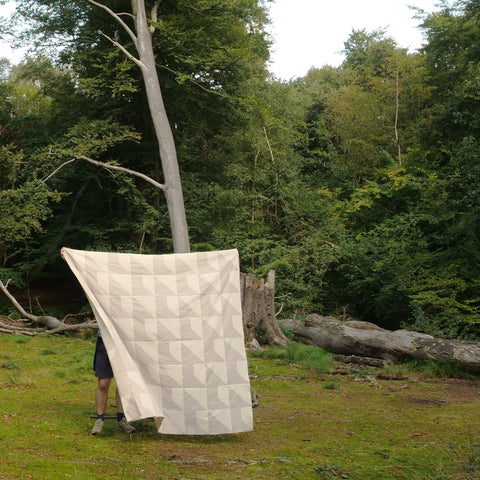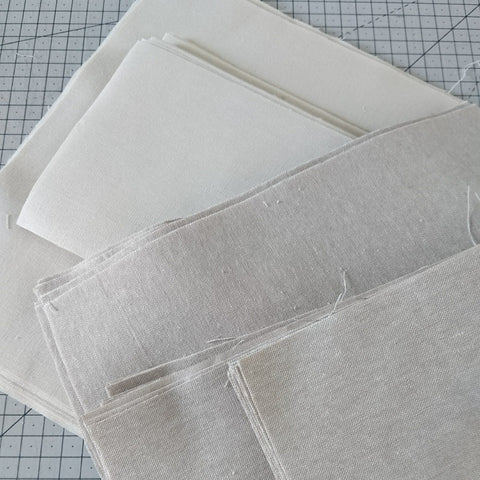
Linen is a luxurious fabric. It has a cool soft feel which drapes wonderfully and just gets better and better with age. It has a natural lustre to it and even undyed linens are a beautiful natural and calming hue. A linen quilt will always be an exceptionally lovely quilt.
BUT linen has a reputation for being tricky to sew with. Luckily when making my Rockwood Quilt by The Blanket Statement, pictured above, I brought to the table all my experience of working with linens from my time as an upholsterer which meant I avoided many of the pitfalls. And I'm going to share them with you here so that you can too!
For the Rockwood quilt I used Kona Essex Linens from Robert Kaufman which are 55% linen and 45% cotton. They have the look and feel of pure of linens with a little extra stability provided by the cotton.

Here's the Linens lowdown:
- Linen shrinks at a different rate from cotton. So, if you're combining linens or linen blends with cottons in your project you should prewash your fabrics.
- Although linen fibres themselves have low elasticity linen fabrics often have a looser weave which means it can have more stretch. If you like to starch your fabrics then starch like you've never starched before! This will help avoid shifting when you cut, sew and press. Having said that I didn't use starch for the Rockwood Quilt (it's just another thing to do!). Some careful handling and the added cotton in the blend reduced the need for it and everything was fine.
- Linens tend to fray more because of the looser weave. This is also true of the Essex Linens so you might want to consider increasing your seam allowance to as much as 1/2''. With an increased seam allowance you also have room to finish your seams with a zigzag stitch for extra durability if you like. But you will need to press them flat after - which happens to be my preferred method anyway.
- Reduce your stitch size. I usually piece at 2 but went for 1.5 to further reduce the chances of fraying. The fibres will find it harder to wiggle free if the stitches are smaller.
- When it comes to basting be mindful again of the extra stretch in your top. I chose to pin baste having both a linen top and backing in my quilt. Any overstretching could easily be rectified with some adjustments to the pins.
- You can also add extra strength to your seams and reduce stress by quilting over them and not too far apart. I'm hand quilting at 2 1/4''.

I always think hand quilting is a perfect match for a linen quilt and the combination makes a wonderful but simple whole cloth baby quilt. If you've never tried hand quilting before this would be the perfect project.
Like reading my blog? Sign up to my newsletter and you'll be first to hear when the next one is out! Subscribe here!
